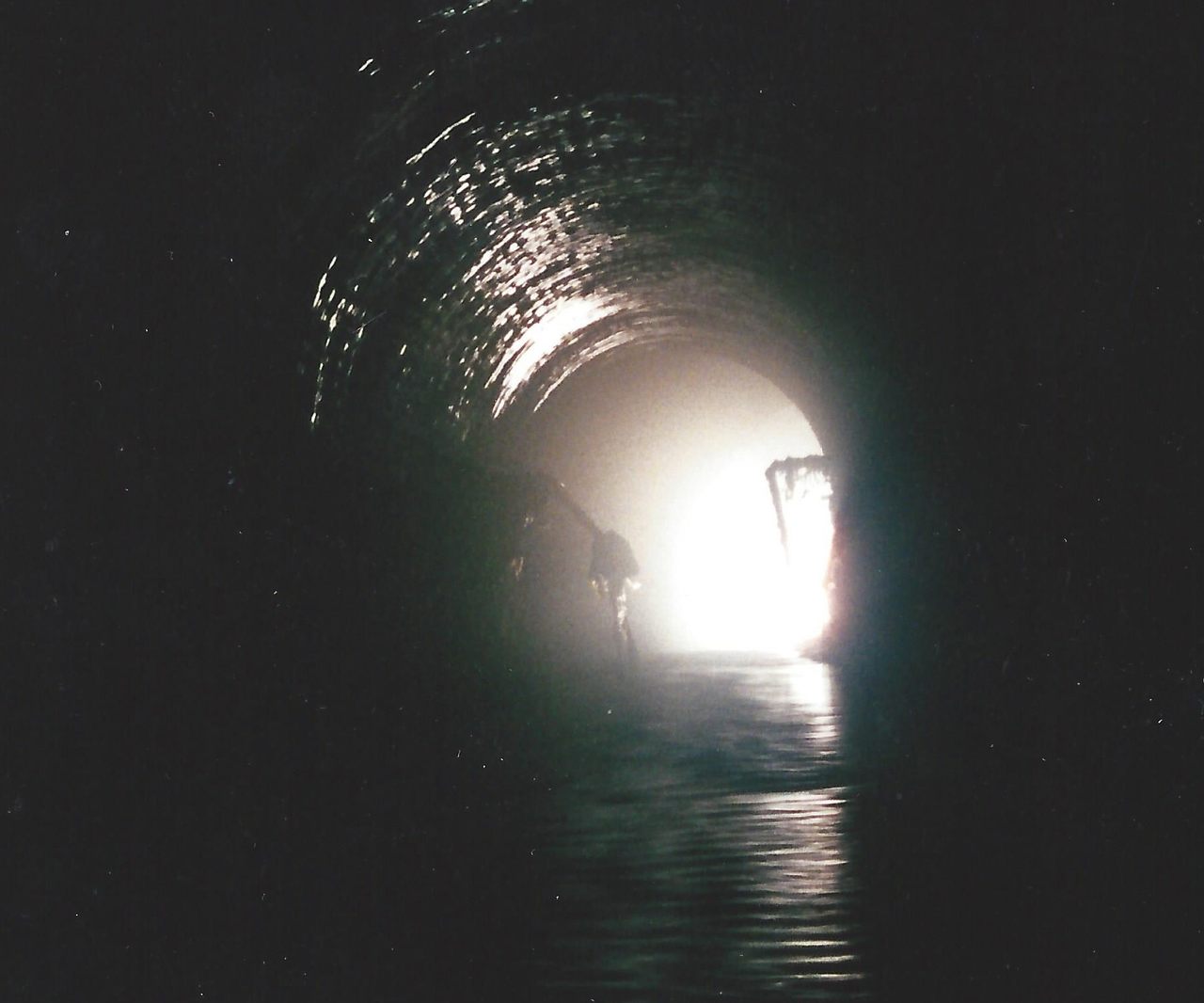The Strange Heat Island Lurking Beneath Minneapolis
An urban explorer ventured deep below downtown in search of Schieks Cave. What he found changed science.
Greg Brick knew it was there, lurking beneath his city, hidden within the Minneapolis water and sewer system: an enticing geologic anomaly called Schieks Cave. For years, he’d read about this maze, carved through the sandstone by rushing water. But his first attempt to find it led to a dead end. Then, in 2000, Brick found a way in.
When Brick arrived at the cave, he shined a flashlight into the thick darkness of the city’s underbelly. He found not just the natural void but also concrete walls that previous generations of civil engineers had built to support the natural structure. Also: roaches, a spaghetti dinner’s worth of earthworms, plastic straws, and a subterranean waterfall dubbed “Little Minnehaha Falls.”
At this flow of water, Brick pulled out his favorite scientific tool: a thermometer. He’s a hydrogeologist after all, tasked with studying how groundwater, soil, and rock interact. Brick always measures the water temperature when he’s underground—which is often, because in addition to being a scientist, he’s also an urban explorer, poking around human-made structures that are abandoned or hidden.

The thermometer gave him a surprise: The water was about 20 degrees hotter than it was supposed to be. It was more like the groundwater of Mississippi than that of Minneapolis. Something was warming the water beneath his city. Brick was determined to understand what—or who—and why.
Brick got into his subterranean hobby when he was 29 and studying geology. “I needed a project to work on,” he says. He found one exploring the groundwater of urban underbellies.
“It was something very cheap and inexpensive to do,” Brick says. “Measuring temperature, it doesn’t cost anything beyond the thermometer itself.”

Years later, his degree and underground experience combined into an unusual job: He was hired by the state of Minnesota to establish the Minnesota Spring Inventory. Legally, as a steward of its groundwater, Minnesota is required to map all its springs. But the state hadn’t compiled that information, and was sued over the omission by a group called Trout Unlimited, a fishing and conservation advocacy organization. The legal tangle led to the creation of the spring inventory, and Brick’s position.
In between obtaining his degree and making that inventory, he continued his urban explorations—including a yearslong quest for Schieks Cave, which he’d read about in old newspaper articles. Its discovery in 1904 by a city sewer engineer was initially kept secret lest the public fear Minneapolis had been built on unstable ground. Little Minnehaha Falls, a spring flowing from the ceiling, appeared on a map that year, however. By 1929, according to an updated map, the cave had been filled with “piers, walls, and artificial drainage systems,” according to a paper Brick wrote.
In 1952, as part of a local cave guide produced for its annual meeting, which was held in Minneapolis that year, the National Speleological Society had gone down to Schieks Cave. The cavers had accessed it by dropping 75 feet down through a manhole on a city street where they had stopped traffic. Retracing that path was not an option for Brick, especially because, “Technically speaking, I wasn’t supposed to be down there,” he says.

Instead, Brick gathered city sewer maps that also had the cave plotted. He charted a path with no manhole required, just a horizontal crawl-in. He made his first attempt to reach the cave in the ‘90s, following storm drains until he neared the cave’s location. Looking around for a connection to the natural formation, he found none. The cave was blocked off.
But urban explorers are a tenacious breed. And so Brick returned in 2000, finding—to his delight—that the wall had collapsed. Suddenly he had a route to enter the system which, he notes, “was, you know, where the raw sewage goes.”
He finally had a way to access the cave—but there was another problem. Along the route, the raw sewage poured from shafts overhead, shooting bacteria into the air as it splashed down and creating what’s politely known as “coliform aerosols.” Unsurprisingly, Brick got sick. “It was kind of like food poisoning,” he says. He wore a respirator on return trips.

But it was on that initial trip into the cave that he took the groundwater’s temperature and made his surprise discovery. The water should have been around 46 degrees Fahrenheit. Instead, it was 66 degrees.
He filed that information away as interesting and, like any good scientist, retested it on a return trip. He got a similar result. It was, in science-speak, “a durable phenomenon,” he says.
On that return trip, “I measured the temperature of seeps all over, wherever I could,” he says. The closer to the surface he measured, the warmer the water was. In 2008, a separate team from the University of Minnesota had predicted that heat from Minneapolis’s urban surface was conducting itself deep underground, heating the groundwater there like a metropolitan microwave. Brick’s subsequent research proved them right—but also showed that they had significantly underestimated the extent of the warming.
Brick published his results in 2022, as a chapter in Threats to Springs in a Changing World, published by the American Geophysical Union. His findings aren’t unique to Minneapolis. From Japan to Italy, Canada to Switzerland, scientists have found other “subsurface urban heat islands” where pavement and basements warm up what’s below them.

Brick’s discovery is not just a curiosity—it has potentially serious consequences. Beneath cities, as pipes degrade and connections weaken, leaks in the sewage system are unavoidable, releasing bacteria into the subterranean environment. In warm groundwater, the potential pathogens can proliferate. “You put them in a stew pot,” Brick says. Normally, positive pressure in urban water systems keeps germs from infiltrating. But when water mains break—as they do 260,000 times each year in the United States and Canada—that protective measure breaks as well. That’s why water main problems are linked to outbreaks of gastrointestinal disease. “The pressure can’t keep ambient water out,” Brick says.
But it’s not all bad news: Canadian and European researchers recently suggested recycling underground heat and using it as a low-carbon way to heat homes, while also cooling the groundwater back down to normal temps.
As for Brick, once he made the heat island discovery, there was no going back—literally. He’s spreading the word about warming groundwater and its consequences but has made his last trip to Schieks Cave. The city upgraded the tunnel system, rendering the cave inaccessible once again.

























Follow us on Twitter to get the latest on the world's hidden wonders.
Like us on Facebook to get the latest on the world's hidden wonders.
Follow us on Twitter Like us on Facebook